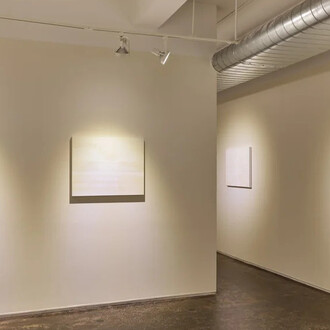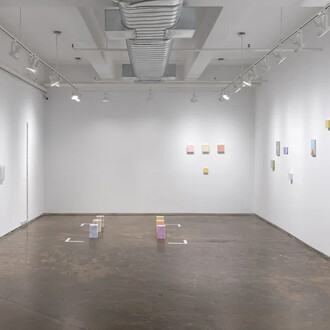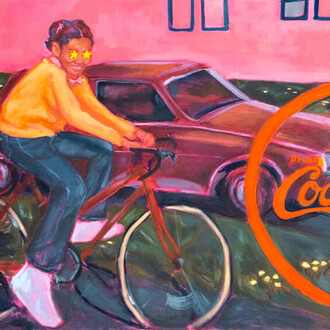A.I.R. Gallery is pleased to present Goddesses + Emaciation, an exhibition of new wall-mounted ceramic sculptures by New York Member Sylvia Netzer. This is Netzer’s fourteenth show at A.I.R.
Sylvia Netzer is Fat! During a studio visit in 2000, the art critic Suzaan Boettger told her that her girth was what people first noticed about her. Boettgen’s comment inspired Netzer’s 2001 exhibition at A.I.R., Fat Show. Though Netzer has since lost over one hundred pounds, issues of body dysmorphia and self-acceptance continue to shape her life and practice.
The sculptures in Goddesses + Emaciation reflect Netzer’s ongoing struggle with self- care and love. They are also the outcome of her five-year study into slip casting. The works in the exhibition are comprised of ceramic goddess figures and dismembered doll parts, both of which were slipcast with liquid porcelain clay in plaster molds. The molds for the goddess figures were formed by hand, while the doll parts were cast from a famous fashion doll. Plaster is known for its deliquescent properties. As it absorbs moisture from the clay, it leaves a hollow ceramic shell behind.
The hollow quality of the resulting figures allows Netzer to yoke them in surprising and surreal combinations. Joined by surgical glass rods, slender doll parts appear to emerge from the more rotund goddess figures. The goddess figures take on various shapes throughout the exhibition. Some are fatter, some are slimmer. Some are tall, some are short. But because the doll parts are cast from mass-manufactured toys, their shape remains constant. The composite sculptures reflect the disorienting effects of body dysmorphia. Though our perceptions of our bodies are constantly mutating, the stifling perfection that the fashion doll embodies persists unremittingly.
“We have all taken in our own Barbara Millicent Roberts,” says Netzer. “We all feel society’s pressure to conform to an unrealistic ideal of what we ‘should’ look and be like.” The sculptures in Goddesses + Emaciation give form to feeling, as they aim to represent in three dimensions our anxieties that we are too big, too flabby, too short, or too tall. And yet, through their humor, they also embody something more joyous: the hard-won feeling of self-acceptance and self-love.
Sylvia Netzer received her M.F.A. in sculpture from Columbia University School of Arts. She is a professor and the director of the ceramics program at The City College of New York. Her work is in the collections of Sol LeWitt, Ursula Von Rydingsvard, and many other private and public collections. Netzer’s work has been featured in many publications, including on the cover of Ceramics Monthly and in Three Dimensions: Women Sculptors of the ’90s by Charlotte Streifer-Rubenstein; Ceramics: Mastering the Craft by Richard Zakin; Encaustic Painting: Contemporary Expressions in the Ancient Medium of Pigmented Wax by Joanne Mattera; Confrontational Ceramics: The Artist as Social Critic by Judith S. Schwartz; and Encaustic: The Complete Guide to Creating Fine Art With Wax by Lissa Rankin. She lives and works in New York City.













